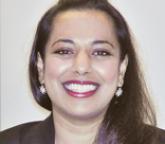“We have a sort of dichotomy here. We don’t want to say rest is bad. It may be very good for these people who have a high organic level or severity to their injury, and we may need to think in terms of resting them longer, whereas these patients [with symptoms only] certainly need to get more active, probably earlier in the process,” Dr. Kontos said.
Activity and social interaction may provide benefits. Miller et al in 2013 reported that environmental enrichment, including cognitive, physical, and social activity, is associated with improved outcome and sparing of hippocampal atrophy in the chronic stages of traumatic brain injury.
The TEAM group agreed, “Active treatment strategies may be initiated early in recovery following concussion.” The group also agreed, “strict brain rest (eg, ‘cocoon’ therapy) is not indicated and may have detrimental effects on patients following concussion.”
A focal point of the TEAM meeting was the concept of various clinical profiles of concussion. The group agreed, “Concussions are characterized by diverse symptoms and impairments in function resulting in different clinical profiles and recovery trajectories.”
“We need to think in terms of what type of concussion does this individual have and is it multiple types,” such as cognitive-fatigue, vestibular, or ocular, said Dr. Kontos. “We don’t typically just see one of these.” For example, a patient may have a predominant vestibular concussion with some posttraumatic migraine and neck involvement. “Oftentimes we see misdiagnoses when people show up. They’ve been diagnosed with cognitive issues when in reality they’re having vision or oculomotor difficulties.”
There are many potential approaches to categorizing, classifying, or profiling concussion, including those that consider posttraumatic mood and migraine as modifying factors, he said.
In addition, the TEAM group stated, “thorough multidomain assessment is warranted to properly evaluate the clinical profiles of concussion.” Various experts may be needed to assess cognitive, exertional, oculomotor, vestibular, and other symptoms and impairment.
As part of a multidisciplinary team, a neurologist, neuropsychologist, or primary care physician could “serve as kind of a point guard, to use a basketball analogy,” said Dr. Kontos. When an aspect of a patient’s assessment or treatment needs to be addressed more in depth, such as with regard to medication, vestibular therapy, or imaging, the patient may be referred to experts in those areas. “We try to work as a team and work back through the point guard to coordinate that care system,” he said. Telemedicine might allow for multidisciplinary treatment in remote geographic areas where establishing multidisciplinary teams otherwise might not be feasible, Dr. Kontos noted.
“Pharmacological therapy may be indicated in selected circumstances to treat certain symptoms and impairments related to concussion,” the TEAM group agreed.There is “very little” evidence for medicine in concussion, and drugs can exacerbate symptoms in some situations, Dr. Kontos said. Randomized controlled trials will help researchers better understand medication’s role in treating concussion.
In particular, patients who do not receive appropriate management after a concussion and then go to a clinic several months later with chronic symptoms may benefit from more active approaches to treatment, such as brisk walking.
Dr. Kontos described the case of an ice hockey player who was prescribed rest following a first concussion. After resting, the athlete began a return-to-play protocol that focused on aerobic exertion with no dynamic movements. As soon as the player returned to the ice, however, dizziness and headache came flooding back.
Several months later, the athlete was referred to a concussion clinic. The patient underwent a thorough evaluation that included vestibular and oculomotor assessments. Clinicians determined that the athlete needed more active treatment, including vision training and walking with head movements. In three weeks, the athlete returned to the ice. About a week later, the athlete resumed full-contact ice hockey.
“Prescribing rest is not the only approach,” Dr. Kontos said. “We need to move the discussion in different directions. We need to be more active with certain people and we need to be more targeted with our approaches.”
—Jake Remaly
